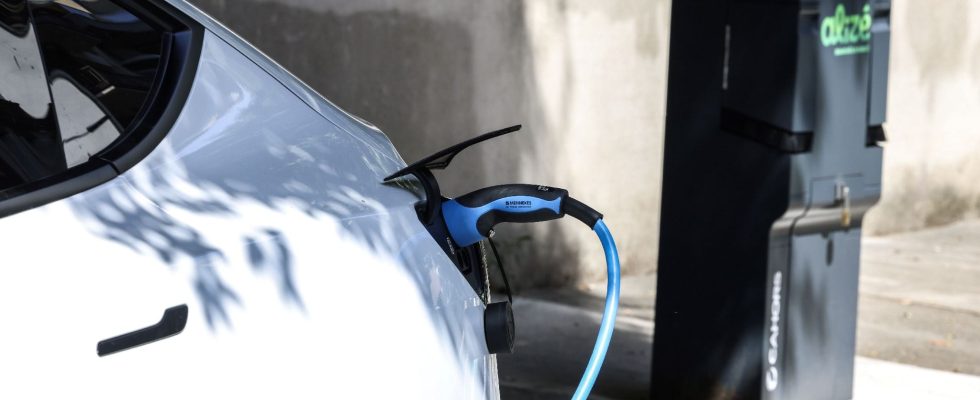MP Damien Adam’s bill aimed at accelerating the greening of corporate automobile fleets and, by extension, that of households, will be debated on Tuesday April 30 in the National Assembly. At a time when the anti-electric car bashing is unleashed and certain private interests seek to dynamite this ambitious bill, it is fundamental that the regulator sets thresholds to accelerate the transition to electric companies. Uber is ready to comply, but is this the case for other VTC and taxi platforms?
Reconciling the end of the month and the end of the world for households
We are witnessing a worrying slowdown in equipment in electric vehicles on the total number of new vehicles in Europe: 11% in January 2024 while they represented 18.5% in December 2023. Worse still, in January 2024, we see a reversal of the trend with sales of diesel cars which have returned ahead of those of electric ones. This is explained by prices of electric vehicles that are still too high for consumers but also by sudden changes in direction as illustrated by public aid which is decreasing dramatically, in France and elsewhere in Europe.
However, when programs make electricity prices more accessible, consumer enthusiasm is real, as evidenced by the success of the social leasing plan supported by the government. So, while waiting for electric vehicles to become more affordable, the development of the second-hand market is decisive.
Only 1.5% of vehicles are electric on the second-hand market today [1]. It is only with companies that this market can develop, and thus accelerate the greening of the entire French automobile fleet. [2]. Companies are in fact responsible for the majority of new vehicle registrations each year. [3] and generally consume a higher volume of kilometers than that of individuals: for example, the 100,000 VTCs and Taxis which circulate in the territory travel on average 250 kilometers per day, compared to 50 kilometers for an individual. Above all, companies renew their automobile fleet on average every three to four years.
These vehicles then quickly arrive on the second-hand market for individuals, becoming accessible to the middle classes. The opportunity to finally reconcile, end of the month and end of the world.
Regulation, serving a conversion shock
However, the few existing public policies in favor of the electrification of company fleets are currently undergoing setbacks and setbacks, as illustrated by the sudden end of the ecological bonus for companies or the recent changes on the Zones. low emission.
The transport sector is responsible for 29% of greenhouse gas emissions [4] and road traffic causing many air pollutants, including more than half of nitrogen oxide (NOx) emissions. [5]. The role of professional fleets is, in this context, essential.
We see it at Uber, the implementation of a dedicated plan, including an investment of 75 million euros and the desire to achieve 100% electric vehicles in 2030, has made it possible to accelerate the transition to electric . By supporting them with the right devices, independent drivers using Uber switch to electric 7 times faster than the general public. And when a driver starts using an electric vehicle, they save up to four times more in emissions than ordinary motorists. Furthermore, 90% of drivers who switched to electric say they are satisfied with their choice, proof that this vehicle is entirely suitable for professionals. [6].
The Adam bill provides for an ambitious but realistic electrification trajectory for professional fleets – 20% in 2025 to reach 90% in 2032 – and financial sanctions. The private passenger transport (T3P) sector, which includes Uber as well as other VTC platforms and taxis, needs this conversion shock. No other VTC or taxi player apart from Uber has concretely given itself the means to move away from thermal, and the electric transition is at a standstill.
However, this bill suffered a serious setback. To everyone’s surprise, taxi and VTC reservation centers were removed from its scope during the debate in the Sustainable Development Commission on April 9. The subject was not addressed and the amendment was simply removed from the text after the session, apparently at the request of other VTC and taxi players, revealing the gulf between their speeches and the reality of their practices. in terms of electrification.
We hope that all stakeholders involved will mobilize to support the bill and reintroduce taxi/VTC centers during its examination in a public session on April 30. And we strongly reiterate a simple message: companies committed to the electric transition, and which are determined to act, need the regulator to accelerate the greening of the entire professional automobile fleet.
Laureline Serieys is General Manager for Uber in France.
[1] T&E modeling on the impact of PPL Adam on the electricity market
[2] Same
[3] Ibidem
[4] According to Citepa, Pollutant and GHG emission data
[5] According to Airparif, The different pollutants and their evolution
[6] Uber internal study of 500 drivers in January 2024
